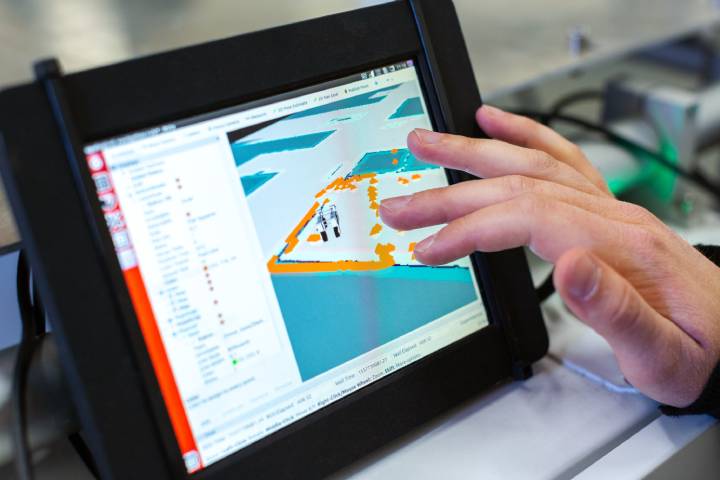Cloud, AI, cybersecurity, or even eco-design… and many more, presents here the strong trends that he believes will impact Technology in the months to come.
CLOUD
The Cloud is a game-changer, a groundswell that has lifted technological limitations and made possible the democratization and industrialization of many other trends, yet not so new, such as artificial intelligence, big data, etc. …
The issue of moving to the cloud concerns and will concern more and more companies this year and even the next few years. The global health crisis we are experiencing has further accentuated this trend. Native Cloud organizations and systems have withstood this crisis better than those with on-premise processes and infrastructures.
The subject of the cloud is not new, but what is currently being played out goes well beyond questions of infrastructure and data center management. The challenges of moving to the Cloud today are beyond technology: they are organizational, business, and legal.
The question of the Cloud is a strategic element in the transformation of companies. Many organizations across the world are already testing or using containers and/or FaaS in their digital products in production, consciously, chosen or not.
Taking advantage of the advances in Cloud platforms necessarily involves understanding the impacts and constraints brought about by these architectural choices, but also by adapting business processes. For example, keeping the rules and pre-Cloud governance processes for access to IT resources does not make sense in a Cloud logic, where access to resources is done “on-demand”.
Which topology to choose, how to take into account the new underlying cost structures, how to take more opportunities from the cloud? How to manage the new constraints? And above all, what value does my organization seek to optimize in the Cloud, what compromises will emerge from optimizing this value? Because it will be impossible to get everything …
These questions are those of defining a Cloud strategy: what about strategic assets? What about sensitive data? What about the vendor-lock in? What architectures and level of abstraction to adapt depending on the use cases? These questions concern the whole organization: ignoring the organizational or cultural business aspects of the company is blocking factors for successful transformations.
CYBERSECURITY
- One of the constraints brought about by the move to the cloud is around the security and protection of strategic assets and sensitive personal data.
- According to a recent study, more than 66% of citizens say they are concerned about the protection of their data and their security.
- For digital service providers, the pressure is therefore growing, and essential to integrate from the start of the product development cycle.
- The talk about continuous security and DevSecOps is more than ever in order and concerns absolutely everyone, as recent attacks attest, including against the most advanced organizations on the issue.
- The trend of remote work and the move to the cloud are also pushing more than ever to reconsider security paradigms.
- No more traditional perimeter security where one seeks to protect the Information System from external threats, place to zero trusts or “Zero Trust”.
- This applies both to employees with the limits of classic models based on VPN logic, but also to all teams that design business applications and services.
AI(Artificial Intelligence)
Precisely, in terms of artificial intelligence, we see through our experiences that AI and organizations are now evolving towards a more reasoned phase and questioning more the use of technology and the underlying needs, which is a very good thing.
The investments made are also more valued, and the question of measurement is more considered, which, once again, is an excellent development.
And it is in the industrial fields that we see the most uses of large-scale AI, including visual inspection for fault detection and predictive maintenance among others.
To continue to derive value from AI and show value, the issue of industrialization and continuous deployment ( especially in edge ) remains at the heart of the work in most contexts.
The performance monitoring and re-training mechanisms of artificial intelligence models are now beginning to be deployed more and more and will continue to be tested in the coming months/years.
The interpretability and explicability of algorithms, the consideration of bias during training, transparency, and data protection will be essential issues to consider when integrating learning algorithms into our products.
60% of people see artificial intelligence algorithms as a threat and not as an opportunity, so it is time to restore trust with the end-users of our digital services.
ECO CONCEPTION
The observation is clear: digital technology is responsible for 4% of global greenhouse gas emissions, and this figure is, unfortunately, experiencing very strong growth, and could even double within a few years….
Organizations are now aware of these issues, which no longer only concern storage and data center issues, but also product design, the choice of technologies, and the accelerated obsolescence of terminals.
Eco-design is, in our opinion, the underlying trend that will overtake all the others.
- The environmental and societal impact will become an obligation, upstream of each product and digital service design.
- The challenge remains in front of us, it is essential to train sensitive and alert product teams ( developers, product manager, DevOps, etc. ), but also to build measurement models according to technologies and product architectures, which will allow at any point in the life of the product, to make conscious and informed choices.
ACCELERATE
Bringing these developments ( and in particular artificial intelligence ) into production to extract value quickly naturally leads us to talk about the Accelerate process.
This study, Accelerate, although published in 2018, will further impact the mindset of companies.
This statistically establishes the correlation between the performance of delivery software and the economic performance of an organization.
Also Read: Technology Trends For 2021 – According To Cisco And Its Customers
